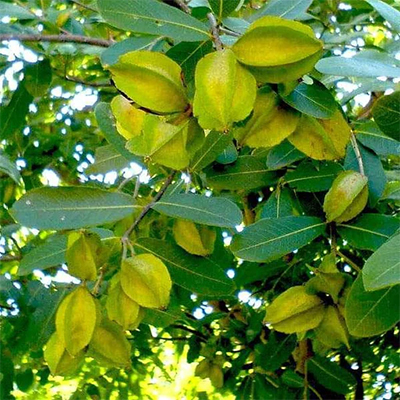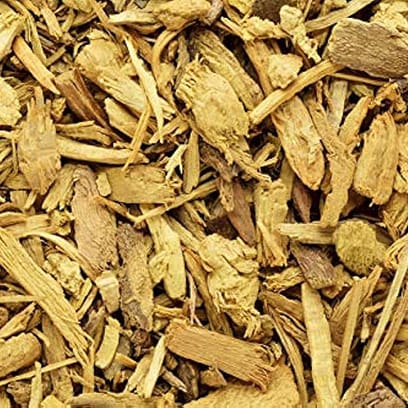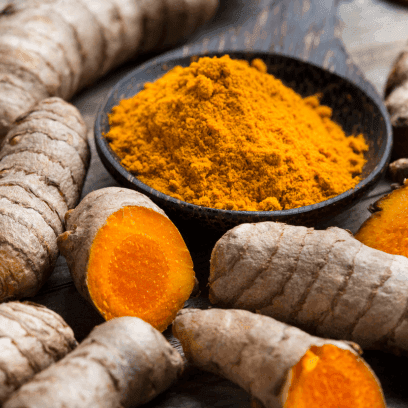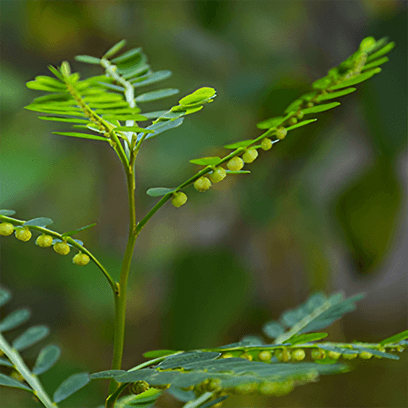On This Page
Arjuna (Terminalia arjuna) – An Ancient Cardiotonic
Introduction
Arjuna botanically known as Terminalia arjuna belongs to the Combretaceae family, is a plant that has been widely used since ancient times and is the most famous herb known today. The father of medicine “Acharya Charaka” includes Arjuna among the trees useful for brushing the teeth. In Ayurvedic classical works of literature, the bark of Arjuna is used as a cooling, astringent, cardio-tonic, Aphrodisiac, etc in various disorders like asthma, cough, ulcers, skin disorders, fractures, etc. Arjuna consists of various active principles like tannins, glycosides, flavonoids, etc which contribute to its various properties like cardiovascular properties, anti-inflammatory properties, anti-microbial properties, etc. Commentator Dalhana interprets Arjuna and Kakubha as separate drugs while most of the Nighantus consider Kakubha as a synonym of Arjuna.
Basonym of Arjuna
अर्जयति प्रापयति हृदताम।
Arjuna gives strength to the heart, hence useful in cardiac disorders.
Synonyms of Arjuna
- According to habitat:
नदी सर्ज: – नदीती रज: सर्ज सदृश: ।
Arjuna commonly grows on the riverbank.
- According to morphology:
धवल: – श्वेत त्वक।
The bark is white.
सर्पण: – प्रसरण शील: ।
Arjuna is a large tree with spreading branches.
श्वेतवह: – श्वेत त्वक।
The bark is white.
मधु गन्धि प्रसूनक: – मधु गन्धि पुष्प त्वात।
Flowers are sweet-scented.
ककुभ – ककुभो दिश: सन्त्यस्य बहु विस्तृत त्वात।
Arjuna is a large tree that covers a large area.
- According to properties and action:
इन्द्रदु – परम शक्ति सम्पन्नो वृक्ष: ।
Tree which is a very potent medicine.
देव साल: – देव शक्ति सम्पन्नो वृक्ष: शालो वा।
Tree with strong action.
वीर वृक्ष: – प्रकृष्ट वीर्य त्वात।
A potent tree.
हृद्रोग वैरी – हृद रोगे विशिष्ट लाभकर: ।
Arjuna is very useful for cardiac problems.
श्वसनेश्वर: – श्वास नाशक: ।
Relieves Swasha Roga.
Regional names of Arjuna
- White Murdah, Arjun tree (English)
- Arjan, Arjun (Hindi)
- Bilimatti, Maddi (Kannada)
- Marutu (Malayalam)
- Anjan, Sadaru (Marathi)
- Sadado (Gujarati)
- Belma, Marudam Pattai (Tamil)
- Tella Maddi (Telugu)
Botanical Name
Terminalia arjuna Wight and Avn.
Terminalia means the disposition of leaves of some species towards the end of branchlets.
Arjuna word is derived from the Sanskrit word ‘Arjuna’
Family
Combretaceae (Haritaki Kula)
Ayurveda Reference for Arjuna (Terminalia arjuna)
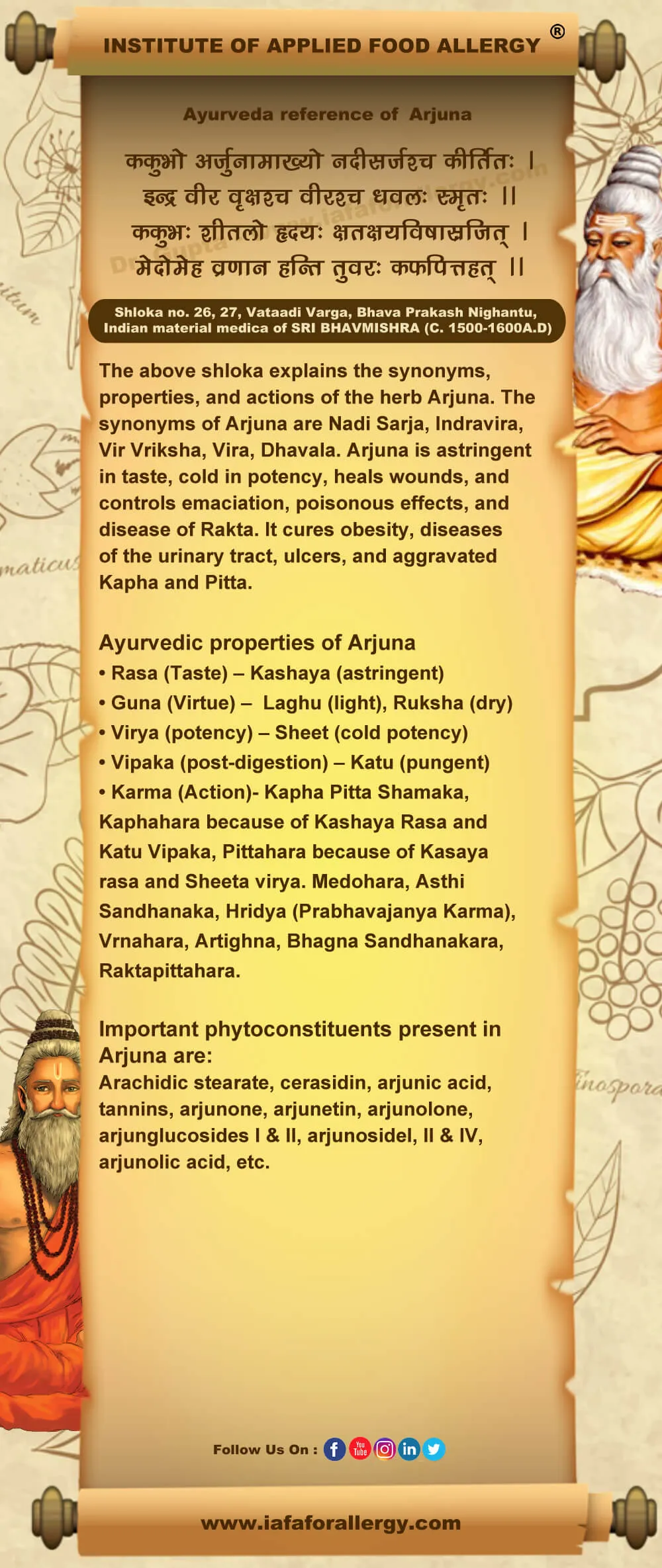
Scientific Classification of Arjuna
| Kingdom | Plantae |
| Class | Dicotyledons |
| Subclass | Polypetalae |
| Series | Calyciflorae |
| Order | Myrtales |
| Family | Combretaceae |
| Genus | Terminalia |
| Species | arjuna |
Classification of Arjuna as per Charaka and Sushruta
- Charaka: Udard Prashmana Mahakshaya, Kashaya Sakandha
- Sushruta: Nyagodhradi Gana, Shaalsaardi Gana
Arjuna’s Description in Brihtrayi as Arjuna, Kakubh, Dhanjya, Parth, Shvetvaha
| Charaka | Shusruta | Vagbhata (Ashtang Hridya) |
| C. S. Su. 3/ 4 | S. S. Su. 14/ 36 | A. H. Su. 15/ 41 |
| C. S. Su. 4/ 43 | S. S. Su. 38/ 12 | A. H. Su. 29/ 72 |
| C. S. Su. 25/ 49 | S. S. Chi. 1/ 97 | A. H. Sa. 1/ 13 |
| C. S. Vi. 8/ 151 | S. S. Chi. 2/ 65 | A. H. Chi. 6/ 53 |
| C. S. Chi. 6/ 26, 30, 37 | S. S. Chi. 18/ 10 | A. H. Chi. 12/ 7, 8, 17 |
| C. S. Chi. 8/ 128 | S. S. Chi. 19/ 31 | A. H. U. 2/ 61 |
| C. S. Chi. 23/ 203 | S. S. Chi. 25/ 28, 32 | A. H. U. 22/ 28 |
| C. S. Chi. 25/ 94 | S. S. Ka. 6/ 3 | A. H. U. 27/ 14 |
| C. S. Chi. 26/ 97, 270 | S. S. Ka. 8/ 114 | A. H. U. 32/ 16 |
| C. S. Chi. 30/ 91 | S. S. Sa. 2/ 7 | A. H. U. 34/ 47 |
| S. S. U. 12/ 11 | A. H. U. 37/ 36 | |
| S. S. U. 39/ 252 | ||
| S. S. U. 40/ 96 | ||
| S. S. U. 45/ 23, 34, 36 |
Historical Background of Arjuna Tree
In Rigveda, the word Arjuna is used either to indicate white color or leucoderma (R.V. 1/ 122 /5). Sounaka also pined the same, but Sayana commented it as Arjuna Vriksa. Kathaka Samhita quoted two kinds of Arjuna i.e Lohita Tula and Babhru Tula. Hindu mythology documented that these two plants have their origin while lord Indra killed a giant Vrtra. The blood (Rakta) and Lasika of Vrtra have attained the form of Lohita Tula and Babhru Tula respectively. Sayana described Tula as Manjari and one of its synonyms is Phalguna. The Babhru Tula Phalguna is considered the best Medhya according to Jaimini Brahmana (1/ 354). Other Brahmana Granthas and Srouta sutras have delineated Arjuna as the substitute for Soma.
Some consider that Jangida mentioned in Atharvaveda as Terminalia arjuna.
Caraka delineated Arjuna in the Udarda Prashmana Mahakshaya (C. S. Su. 4). Brhatrayi has indicated it for Raktapitta, Arsha, Kustha, Prameha, Mutraghata, and Vrana but not Hridya Roga. It is Vrinda, Chakrapani, and Sodhala who have highlighted the role of Arjuna in Hrid Roga. Susruta mentioned Arjuna and Kakubha separately (S. S. Ka. 6/ 3). In the opinion of Dalhana in this context, Kakubha is a shrub with aromatic roots (Sugandhit Mool) and it may be Artagala. Though Dalhana’s comments are confusing, its identity is usually made with Arjuna or a variety of Arjuna.
In certain instances, Charaka quoted the utility of flowers of Kakubha in therapeutics (C. S. Ci. 23/ 99 & 29/ 142). Dhananjaya is the synonym used only twice by Brihatrayi (C. S. Ci. 4/ 74 & A. H. U. 22/ 82). Similarly, Partha is the synonym delineated once each by Susruta and Vagbhata (S. S. Ka 6/ 23 & A. H. U. 22/ 107). Partha is another plant identified with Kapotavanka by not with Arjuna (A. H. Su. 15/ 24). Svetavaha is the synonym only used by Vagbhata in one instance (A. H. Su. 15/ 19).
Raghunathji Indraji (Katobhatta) believes that Sterculia urens or Terminalia glabra are the real sources of Arjuna.
Rasikhal Parikh also opines that Sterculia is the correct source of Arjuna.
Chunekarji informed that some Vaidyas use Lagerstromoea flos-reginae as Arjuna.
Dr. Madhukar Reddy (Heritage Bio Natural Products, Hyderabad) informed in a personal communication that Terminalia arjuna is an often rejected herb in the European Union. It is considered Cardiotoxic, abortifacient, and fish poison in the EU. In this context, it may be essential to rethink the identity of Arjuna.
Dr. Chopra’s report about myocardial necrosis as a side effect of T. arjuna may be thoroughly reviewed. However, Arjuna Ksheera Paka is the best form of administration for heart diseases
Varieties of Arjuna
If we consider Arjuna and Kakubha as two different kinds or even notice the common practice of using white and black varieties of Arjuna. They are identified as Terminalia arjuna and Terminalia alata respectively.
External Morphology of Terminalia arjuna
- Habitat- Arjuna is found as a naturally growing plant in dense forests throughout India. Arjuna can be successfully raised by sowing seeds. Arjuna is a large tree with a huge, buttressed trunk and horizontally spreading branches.
- Bark- Smooth, Gray, flaking off in large flat pieces. Sapwood is reddish-white and the heartwood is brown.
- Leaves- Sub-opposite, 10-15 cm long, 4-7 cm wide, oblong or elliptic-oblong, obtuse or subacute, pale dull green above, pale brown beneath. Shallowly crenate, serrate in the upper part. Base rounded or cordate, often unequal sided, main nerves arcuate, 10-15 Pairs, reticulate venation. The petiole is 0.5 to1 cm long, with 1 or usually 2 prominent glands at the top immediately below the leaves.
- Inflorescence- Short axillary spikes or terminal panicles.
- Flowers- Sessile, bracteoles linear, shorter than flowers.
- Fruit- Drupe, 2.5-5 cm in diameter, ovoid or obovoid- oblong, fibrous, woody, glabrous, dark brown with 5 hard projecting wings.
Flowering and fruiting time
Flowers in March-June and fruits occur from October to February.
External morphology of Terminalia alata
A large tree, 25-32 m high; bark dark, cinereous and rough.
- Leaves- Sub- opposite or uppermost alternate, hard, coriaceous, oblong, ovate or elliptic, hairy beneath.
- Flowers- Dull yellow, in erect terminal panicles.
- Fruit- with 5 broad wings, obovoid-oblong.
Distribution of Arjuna
Terminalia arjuna is found throughout India from the seacoast to an altitude of 1000 m and is generally met along the riverbanks, hill streams, and canal bunds. The tree is planted along the National and State highways for shade. The tree is also distributed in Sri Lanka and Malaysia.
As we know that Terminalia alata is Kakubh. Interestingly, in the Dandakaranya area, both T. arjuna and T. alata with broadly winged fruit and black trunk with cracked bark are used for the same purposes. Moreover, the chemical constituents of both plants also match well.
The useful part of Arjuna
Bark
The bark is flat or slightly curved, stratified pieces of stem bark of varying sizes and 5 to 10 mm thickness. External surface pink or flesh-colored with a mealy coating. Inner surface reddish-brown, finely striated, peeling out in thin flakes.
- Fracture- Fibrous
- Odor- None
- Taste- Astringent
Important phytoconstituent of Arjuna
- Important phytoconstituent of T. arjuna: Arachidic stearate, cerasidin, Arjun acid, tannins, arjunone, arjunetin, arjunolone, arjun glucosides I & II, arjunosideI, II & IV, arjunolic acid, etc.
- Important phytoconstituent of T. alata: Gum, arjunic & arjunolic acids, arjunetin, betulinic and ellagic acids, tannins, etc.
Recent research on Arjuna
- Methanol, ethanol, acetone, and aqueous (hot and cold) extracts from the leaves and bark of Terminalia arjuna were tested for their antimicrobial activity and found to be useful to treat bacterial ear pathogens, especially S. aureus. (Aneja KR, Sharma C, Joshi R. Antimicrobial activity of Terminalia arjuna Wight & Arn.: an ethnomedicinal plant against pathogens causing the ear infection. Braz J. Otorhinolaryngology. 2012 Feb; 78(1):68-74).
- Methanol extract of Terminalia arjuna leaf (META) exhibited remarkable antitumor activity against Ehrlich ascites carcinoma (EAC) in Swiss albino mice (Biswas M, Bhattacharya S, Ghosh AK, Kumar RB, Bera S, Gupta M, Haldar PK, Antitumor activity of Terminalia arjuna leaf against Ehrlich ascites carcinoma in mice. Nat Prod Res. 2011 Oct 24.
- Diethyl ether, ethyl acetate, and ethanol fractions of Terminalia arjuna bark exerted hypolipidemic and antioxidative effects at two different dose levels of 175 and 350 mg/kg body weight in Poloxamer (PX)-407. induced hyperlipidemic albino Wistar rats: (Subramaniam lipid peroxidation, DPPH, hydrogen peroxide-induced RBCs hemolysis, and (DCFH (2)-DA) assay (p<0.05). (Sun FY, Chen XP, Wang JH, Qin HL, Yang SR, DUGH. Arjunic acid is a strong free radical scavenger from Terminalia arjuna. Am J Chin Med. 2008; 36(1):197- 207).
- Anti-inflammatory
- Cardioprotective
- Anti- dysenteric
- Diuretic
- Antihypertensive
- Cardiotonic
- Lipoprotein lowering effect
- Repellent
- Anti–ischemic effect
- Antidiabetic
- Wound healing activity
- Anti-bacterial
- Antiviral
- Anticancer
Rasa Panchaka of Arjuna
| Rasa (Taste) | Kashaya (astringent) |
| Guna (Virtue) | Laghu (light), Ruksha (dry) |
| Virya (potency) | Sheet (cold potency), Ushana (hot potency) by Dhanwantri Nighantu |
| Vipaka (post-digestion) | Katu (pungent) |
Dosha Karma of Arjuna
Kapha Pitta Shamaka, Kaphahara because of Kashaya Rasa and Katu Vipaka, Pittahara because of Kasaya rasa and Sheeta Virya.
Actions on Dhatu- Medohara, Asthi Sandhanaka
Karma (Actions) of Arjuna
Hridya (Prabhavajanya Karma), Vrnahara, Artighna, Bhagna Sandhanakara, Raktapittahara.
Prayogarha Vyadhi (Therapeutic indication) of Arjuna
- Hridya Roga
- Medo Roga
- Parmeha
- Arti Trishna, Ura Kshata
- Rakta Pitta
- Trishna
- Arti
Aamyik Prayog (Therapeutic uses) of Arjuna
Hridya Roga (heart disease):
- In cardiac disorders, milk processed with Arjuna bark should be used. In the same way, milk processed with Sarkara or Panchamula or Bala or Madhuka may be used. (Vrinda Madhava. 31/ 8)
- Those who take Arjuna bark with ghee, milk, or jaggery- water are relieved of heart disease, chronic fever, intrinsic hemorrhage and attain longevity. (Vrinda Madhava. 31/ 9)
- One who takes powder of wheat and Arjuna bark cooked with oil, ghee, and jaggery with milk overcomes all the cardiac disorders. (Gada Nigreha. 2. 26. 21)
Kshayaja Kasa (cough):
- Powdered Arjuna bark impregnated with Vasa juice several times should be taken with ghee honey, and sugar candy. It alleviates consumption, cough, and intrinsic hemorrhage. (Vrinda Madhava. 10/ 17, Vanga Sena, Rajayaksma. 56, Bhava Prakasha Samhita Chikitsa Sthana. 12/ 29)
- Arjuna bark, Nagabala, and Kapikachhu seeds are powdered together and taken after mixing with honey, ghee, and sugar followed by intake of milk. It alleviates consumption, cough, etc. (Bhava Prakasha Samhita Chikitsa Sthana. 11/ 4, Chakra Dutta. Nagabala- Rasayana 21. 15-16)
Shukra Meha and Puya Meha (types of Prameha):
- In Shukra- Meha, the decoction of Arjuna and Chandana is useful. (Shusruta Samhita Chikitsa Sthana. 11/ 9)
- Decoction of Dhava and Arjuna is beneficial in Puya Meha. (Harita Samhita. 3. 28. 7)
Kustha Roga (Skin disease):
- In freckles, the paste of Arjuna bark or Manjistha mixed with honey should be applied. or the ash of the white horse’s hoof mixed with butter should be used as a paste. (Ashtanga Hridya Uttara Tantra. 32/ 16, Vrinda Madhava. 57. 36, Sharangdhara Samhita. 3. 11. 12)
- Khadira, Aragvadha, and Arjuna are useful as bath and intake. (Charaka Samhita Chikitsa Sthana. 7/ 129)
Bhagna (Fracture):
- One afflicted with a fracture should take Arjuna bark or wheat Powder with milk added with ghee. (Vrinda Madhava. 46. 10)
- Powder of Arjuna bark and Laksha is mixed with Guggulu and pounded with ghee. This promotes union in fracture, the diet of the patient being milk and ghee. (Bhava Prakash Samhita Chikitsa Sthana. 8/ 29)
Rakta Pitta (Intrinsic hemorrhage):
- The bark of Arjuna, Udumbara, Vetasa, etc., combined or separately, checks intrinsic hemorrhage. (Charaka Samhita Chikitsa Sthana. 4. 75- 77)
- One should take a cold infusion of the bark of Jambu, Amra, and Arjuna. (Sushruta Samhita Uttara Tantra. 45/ 23)
Vrna (Wound):
The leaves of Kadamba, Arjuna, Nimba, Patala, Pippali, and Arka are useful for covering the wound. (Charaka Samhita Chikitsa Sthana. 25/ 95)
Arsha (Piles): Decoction of Vasa, Arjuna, Yavasa, and Nimba should be used for irrigating the hemorrhoids. (Charaka Samhita Chikitsa Sthana. 14/ 214)
Atisara (Diarrhea): In diarrhea associated with blood, Arjuna bark mixed with honey should be taken with milk. It checks hemorrhages. (Vrinda Madhava. 3/ 41)
Grahani Roga (IBS): The alkali of Kesaraja and Arjuna took with curd water in the morning alleviates Grahani disorder associated with Ama. (Vang Sena Grahani. 189)
Important benefits of Arjuna
- Angina (Hridya Roga): Recent studies show that Arjuna significantly reduces the level of stress hormone i.s cortisol, improves HDL level, and lowers blood pressure thus helping in the reduction of chest pain. As per Ayurveda aggravated Kapha that leads to Ama is the culprit behind Angina along with Vata which is responsible for pain. Arjuna with its Vata and Kapha balancing properties reduces Ama, calms aggravated Vata, and removes the blockage of heart channels.
- Diarrhea (Atisara): As per recent research, active principles of Arjuna exhibit astringent, anti-bacterial, and anti-microbial properties, which result in controlling the intestinal infection, regulating gut motility, and also help to balance water and electrolytes in the body.
- Urinary tract infection (Mutra Vaha Srotas Vikara): Arjuna has antibacterial properties that result in improving the symptoms like increased urine frequency of urinary tract infection.
Matra (Therapeutic administration and dosage) of Arjuna
- Kwatha (decoction)- 60- 100 ml
- Churna (powder)- 3- 6 grams
- Ksheera Paka (decoction with milk)- 20- 30ml

Have A Health Issue?
Consult Online
- Dr. Sahil Gupta (B.A.M.S., M.H.A.)
Ayurvedic Allergy Specialist
CEO & Founder of IAFA®
Classical reference of Arjuna:
Bhava Prakasha Nighantu Vataadiadi Varga- 26
Synonyms
ककुभो अर्जुनामाख्यो नदीसर्जश्च कीर्तित: ।
इन्द्र वीर वृक्षश्च वीरश्च धवल: स्मृत: ।।
Bhava Prakasha Nighantu Vataadi Varga- 27
ककुभ: शीतलो हृदय: क्षतक्षयविषास्रजित् ।
मेदोमेह व्रणान हन्ति तुवरः कफपित्तहत् ।।
Dhanwantri Nighantu Aamradi Varga- 105
ककुभस्तु कषायोष्ण: कफघनो व्रण नाशन: ।
पित्तश्रमतृषार्तिघ्नो मारुतामयकोपन: ।।
Kaideva Nighantu Aushadhi Varga- 820
अर्जुनस्तुवरः शीतो जयेत् पित्तकफ व्रणान।
मेदोमेहास्रहद्रोगस्वेद भग्न क्षतक्षयान् ।।
Raja Nighantu Prabhadraadi Varga- 118
अर्जुनस्तु कषायोष्ण: कफघ्नो व्रण नाशन: ।
पित्तश्रमतृषार्तिघनो मारुतामयकोपन: ।।
Priya Nighantu Haritkyadi Varga- 126
अर्जुन: कफपित्तघ्नो मेदोमेह व्रणस्रजित् ।
उरः क्षतम क्षय हन्ति रक्तपित्ते हदामयान् ।।
Shodhala, Gada Nigreha, 2- 26- 21
हद्रोगे
तैलाज्यगुडविपक्वं चूर्ण गोधूमपार्थजम वापि।
पिवति पयो अनु न भवति जितसकलहदामय: पुरुष: ।।
Vang Sena, Grahani, 189
ग्रहणी
केशराजो अर्जुनक्षार: प्रात: पीतश्च मस्तुना।
निहन्ति साममत्यर्थमचिरात् ग्रहणीरुजम्।।
Harita Samhita, Puya Meha, 3- 28- 7
पूयमेहे
….पूयमेहे कषायश्च धवार्जुनस्य….. ।
Vrinda Madhava, 10- 17, Vangsena, RajyakshmaAdikaar, 56, Bhava Prakasha Samhita Chikitsa Sthana, 12- 29
क्षयकासे
चूर्ण काकुभमिष्ट वासकरसभावितम बहुवारम् (बहन् वारान्) ।
मधुघृतसितोपलाभि: लेह्म क्षयकासरक्तपित्तहरन्।।
Bhava Prakasha Samhita Chikitsa Sthana
मूत्रोरोधज उदावर्त
कषायं ककुभस्य च।
Chakra Dutta, Hridya Roga Chikitsa
बल सन्जार्थं
ककुभस्य च वल्कलम्।
रसायन परम् बल्यम् ॥
Vrinda Madhava, Atisaara Chikitsa, 3- 41
रक्तातिसारे
….अर्जुनत्वचा: ।
पीता: क्षीरेण मध्वाद्या: पृथक् शोणितवारणा: ।
Vrinda Madhava, 46- 10
भग्ने
भग्न: पिवेत् त्वक् पयसा अर्जुनस्य ।
Vrinda Madhava, Hridya Roga Adhikaara 31- 9
दीर्घायुष्ये
घृतेन दुग्धेन गुडाम्भसा वा पिवन्ति चूर्ण कुकुभत्वचो ये।
हद्रोगजीर्णज्वरपित्तरक्त हत्वा भवेयुश्चिरजीविनस्ते।।
Chakra Dutta, Hridya Roga Chikitsa, 31- 9
हृदयामये
घृतेन दुग्धेन गुडाम्भसा वा ‘पिवन्ति चूर्ण ककुभत्वचो ये।
हद्रोगजीर्णज्वररक्तपिक्त हत्ता भवेयुश्चिरजीविनस्ते।।
Chakra Dutta, Hridya Roga Chikitsa, 31- 13
गोधूमपार्थजचूर्णम्
तैलाज्यगुडविपक्तं चूर्ण गोधूमपार्थजं वा अपि।
पिवति पयो अनु च स भवेज्तसकलहदामयः पुरुष: ।।
Vrinda Madhava, 31- 8
हदयामये
अर्जुनस्य त्वचासिद्धं क्षीरं योज्यं हृदयामये।
Raja Vallabha Nighantu
पार्थ: पथ्य: क्षते भग्ने रक्तस्तम्भनकृच्छयोः।
Chakra Dutta, 55- 44
व्यंग चिकित्सायामर्जुनत्वया
Charaka Samhita Chikitsa Sthana, 9/ 214
अर्शः सु
परिषेचने विदध्यात् वृषककुभयवासनिवाँश्व।
Charaka Samhita Chikitsa Sthana, 4
रक्तपित्ते
धनञ्जयोदुम्वुर ।
निशिस्थिता वा स्वरसी कृता वा कल्कीकृता वा मृदिता श्रृता वा।
एते समस्ता गणश: पृथग्वा रक्तसपित्त॑ शमयन्ति योगा: ।
Charaka Samhita Chikitsa Sthana, 13/ 13
व्रणाच्छादनार्थम्
अर्जुनस्य पत्रं……. ।
व्रणप्रच्छादने विद्वानादिशेत् ।
Charaka Samhita Chikitsa Sthana, 7/ 126
कुष्ठे
खदिरावघातककुभा शस्यन्ते स्रानपानेषु ।
रक्तपित्ते
पिवेच्छीतकषायं वा जम्ब्वाम्रार्जुनसम्भवम्।
Shusruta Samhita Uttara Tantra, 45/ 23
शुक्रमेहे
शुक्रमेहिनं ककुभचन्दनकषायं वा ।
Ashtanga Hridya Chikitsa Sthana, 11/ 17
मूत्राघाते
कषायं ककुभस्य वा।
Ashtanga Hridya Sharira Sthana, 2- 44
मूढगर्भे
शिरीषककुभक्वाथपिचून॑ योनौ विनिक्षिपेत ।
उपद्रवाश्च ये अन्ये स्युस्तान् यथास्वमुण्चरेत्।।
Ashtanga Hridya Uttara Tantra, 32- 16
व्यंगेषु
व्यंगेषु चार्जुनत्वग्वा ।
Bhava Prakasha, Kasa Roga Adhikara, 12/ 29
कासे (क्षयज)
चूर्ण काकुभपिष्ट वासकरसभावितम बहुन्वारान्।
मधुघृतसितोपलाभिरलेह्य क्षयकासरक्तहरम्।।
Bhava Prakasha, Bhagna Roga Adhikara, 48/ 29
भग्ने
चूर्ण पुरेण संयोज्य घृतेनार्जुनलाक्षयो: ।
भग्र: सन्धानमायाति लीढं क्षीरघृताशिना।।
Chakra Dutta, Hrida Roga Chikitsa, 31- 32
सर्वहद्रोगे
पार्थस्य कल्कं स्वरसेन पक्वं शस्तम कृते सर्वहदयामयेषु ।
Chakra Dutta, Hrida Roga Chikitsa, 31- 8
पित्तजहद्रोगे
अर्जुनस्य त्वचा सिद्ध क्षीरं योजयं हदामये।
Chakra Dutta, Hrida Roga Chikitsa, 31- 14
हृद विकारे
गोधूमककुभ चूर्ण छागपयो गव्यसर्पिषा पक्वं ।
मधु शर्करा समेतं श्मीति हृद्रोगमद्धतम पुंसां ।
Specific Formulation of Arjuna
- Arjuna Ghrita for Sarva Hrida Roga
- Arjuna Twak Churna for Hridya Roga
- Arjunadi Siddha Ksheera for Hridya Roga
- Parthya Arishta for Hridya Roga, Respiratory disease (Phuppusa Roga)
- Kakubhadi Vati for Yakshma and Kasa
- Arjunadi taila for Prameha
- Sarivadi vati for Karna Roga, Hridya Roga
- Kakubhadi Churna for Kridya Roga and Raktapitta
Contraindication and side effects of Arjuna
- Arjuna Patra (leaves) or Arjuna Chaal (bark) Lepa (paste) may cause an allergy if your skin is hypersensitive. So, advise using under medical supervision.
- If you are taking anticoagulant drugs, it is advised to use them as per your doctor’s suggestion as they may interact with blood thinners.
- It is advised to monitor your sugar regularly if you are consuming Arjuna as it may decrease blood sugar levels.
- It is best to avoid the use of Arjuna during pregnancy and breastfeeding.
Suggestive reading regarding Arjuna
- Amalraj, Augustine, and Sreeraj Gopi. “Medicinal properties of Terminalia arjuna (Roxb.) Wight & Arn.: A review.” Journal of traditional and complementary medicine vol. 7,1 65-78. 20 Mar. 2016, DOI: 10.1016/j.jtcme.2016.02.003
- Gopinath K., Venkatesh K.S., Ilangovan R., Sankaranarayanan K., Arumugam A. Green synthesis of gold nanoparticles from leaf extract of Terminalia arjuna, for the enhanced mitotic cell division and pollen germination activity. Ind Crop Prod. 2013; 50:737–742.
- Gopinath K., Venkatesh K.S., Ilangovan R., Sankaranarayanan K., Arumugam A. Green synthesis of gold nanoparticles from leaf extract of Terminalia arjuna, for the enhanced mitotic cell division and pollen germination activity. Ind Crop Prod. 2013; 50:737–742.
- Ram A., Lauria P., Gupta R., Kumar P., Sharma V.N. Hypocholesterolemic effects of Terminalia arjuna tree bark. J Ethnopharmacol. 1997; 55:165–169.
- Mehul, Mehta & Doshi, Krunal & Shukla, Vinay. (2016). THERAPEUTIC IMPORTANCE OF ARJUNA (TERMINALIA ARJUNA W. & A.) IN AYURVEDA -A CLASSICAL REVIEW. VOL_II. 1371_1385.
- Phani Kumar G., Navya K., Ramya E.M., Venkataramana M., Anand T., Anilakumar K.R. DNA damage protecting and free radical scavenging properties of Terminalia arjuna bark in PC-12 cells and plasmid DNA. Free Radic Antioxid. 2013; 3:35–39.
- Bachaya H.A., Iqbal Z., Khan M.N., Jabbar A., Gilani A.H., Din I.U. In vitro and in vivo anthelmintic activity of Terminalia arjuna bark. Int J Agric Biol. 2009; 11:273–278.
- Honda T., Murae T., Tsuyuki T., Takahashi T., Sawai M. Arjungenin, arjunglucoside I and arjunglucoside II, a new triterpene and new triterpene-glucosides from Terminalia arjuna. Bull Chem Soc Jpn. 1976; 49:3213–3218.
- Ali A., Kaur G., Hayat K., Ali M., Ather M. A novel naphthanolglycoside from Terminalia arjuna with antioxidant and nitricoxide inhibitory activities. Pharmazie. 2003; 58:932–934.
- 36. Ali A., Kaur G., Hamid H. Terminoside A, a new triterpene glycoside from the bark of Terminalia arjuna inhibits nitricoxide production in murine macrophages. J Asian Nat Prod Res. 2003; 5:137–142.
- Kuo, P.L., Y.L. Hsu, T.C. Lin, L.T. Lin, J.K. Chang, and C.C. Lin, 2005. Casuarinin from the bark of Terminalia arjuna induces apoptosis and cell cycle arrest in human breast adenocarcinoma MCF-7 cells. Planta Medica, 71: 237-243.
- Karthikeyan, K., B.R. Sarala Bai, K. Gauthaman, K.S. Sathish and S. Niranjali Devaraj, 2003. Cardioprotective effect of the alcoholic extract of Terminalia arjuna bark in an in vivo model of myocardial ischemic reperfusion injury. J. Life Sci., 73: 2727-2739.
- Gupta, R., S. Singhal, A. Guyle and V.N. Sharma, 2001. Antioxidant and hypocholesterolemic effects of Terminalia arjuna tree-bark powder: A randomized placebo-controlled trial. J. Assoc. Physicians India, 49: 231-235.
- Halder, S., N. Bharal, P.K. Mediratta, I. Kaur and K.K. Sharma, 2009. Anti-inflammatory, immunomodulatory, and antinociceptive activity of Terminalia arjuna Roxb bark powder in mice and rats. Indian J. Exp. Biol., 47: 577-583.
References
- Agnivesha, Charaka, Dridhabala . In: Charaka Samhita, ed. Vaidya Jadavaji Trikamji Aacharya, editor. Varanasi: Chaukhamba Sanskrit Sansthan; 2009.
- Sushruta. In: Sushruta Samhita, Sutra Sthana, ed. Vaidya Jadavji Trikamji Acharya., editor. Varanasi: Choukhambha Orientalia; 2005.
- Vagbhata. In: Ashtanga Hrudaya, 9th ed. Anna Moreshwar Kunte, Krishnashastri Navarre, Harishastri, editors. Varanasi: Choukhambha Orientalia; 2005.
- Bhavamishra. In: BhavaPrakasha Nighantu, Vataadi Varga 11th ed. part 2. Brahma Shankara Mishra., editor. Varanasi: Choukhambha Bharati Academy; 2009.
- Bhavprakasha, commentary by Bulusu Sitaram, forwarded by K.C.Chunekar
- Sharma PV, Kaideva Nighantu. Aushadhi Varga. Chaukhamba Orientalia, Varanasi; 2006:
- Tripathi I., Raja Nighantu, Prabhdradi Varga, Chaukhamba Krishnadas Academy; Varanasi; 2010
- Dhanwantri Nighantu, Aamradi Varga
- Shodhala Nighantu
- P.V. Sharma, Priya Nighantu, Haritkyadi Varga, Chaukhamba Krishnadas Academy; Varanasi.
- Dr. Gyanendra Pandey, Dravyaguna Vigyana, reprint 2012, Chwkhamba Krishnadas Academy
- K. Niteshwar Dravyagunavigyana, reprint 2017.
- Dr. J.L.N. Sastry and Dr. B.S. Sastry, Dravyaguna Vigyana, Chaukhambha Orientalia, Varanasi.
- Chakrapanidatta, Chakradatta with the vaidayaprabhahindi commentary by indradevatripathi, chaukambha sankritasansthan, varanai 2nd Edition, 1994.
Ayurveda is an Indian system of medicine that is popular since ancient times. Dr. Gupta’s IAFA® has been conducting research studies to find out different phytoconstituents of herbs and their action in the body. Such knowledge acquired by our experts is used in the preparation of medicines and providing the treatment facilities safely and effectively. IAFA® is the provider of safe and effective treatment for a wide range of diseases, mainly allergic diseases all based on Ayurveda.
Was this Page Helpful?
Read More Articles

Daruharidra (Berberis aristata)
Explore the uses, benefits, and medicinal properties of Daruharidra (Berberis aristata), also…

Haridra (Curcuma longa)
Discover the uses, benefits, and medicinal properties of Haridra (Curcuma longa), also…

Bhumi Amla (Phyllanthus Niruri)
Know the Uses, Benefits and Medicinal Properties of Bhumi Amla (Phyllanthus Niruri).…

